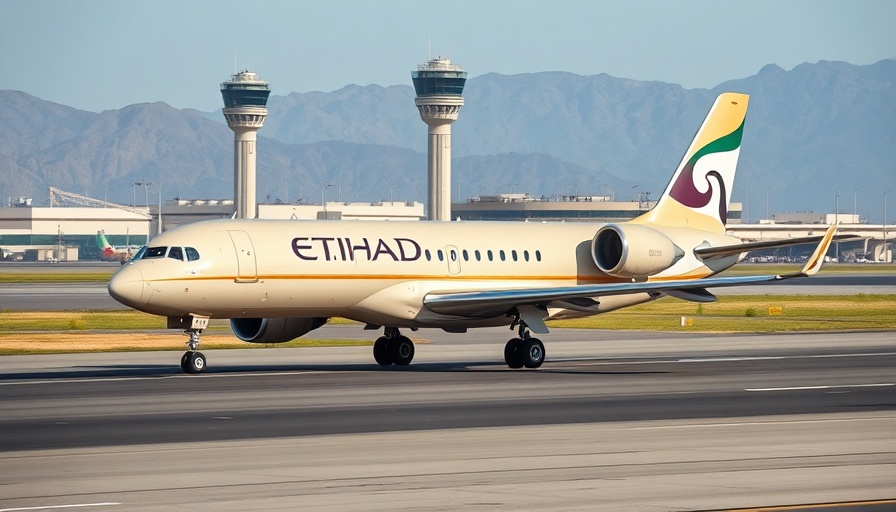
Trump's UAE Visit Spawns New Transcontinental Flight
In an unexpected turn of events, President Trump's recent trip to Abu Dhabi proved pivotal for air travel connections, leading Etihad Airways to announce direct flights to Charlotte Douglas International Airport. This initiative is set to launch on May 4, 2026, marking a significant milestone in aviation history.
Connecting Continents: Charlotte's New Role
With this new route, Charlotte will gain its first non-stop service to Asia, operated by the wide-body Boeing 787, and it will also become the longest non-stop flight from the airport, spanning an impressive 7,400 miles. This expansion reflects a growing trend among airlines to establish more direct international connections, particularly in the Southeast United States.
Strategic Timing: The Role of Presidential Diplomacy
As Etihad director of network and scheduling, Adria Rabassa, noted, the decision to initiate this flight schedule was “well-timed,” coinciding with Trump's official diplomatic visit to the UAE. Historically, political relations can significantly influence trade and travel agreements, as seen with this initiative that will benefit both the UAE and Charlotte economically.
Future Trends in Air Travel: More International Links
Etihad's expansion into Charlotte signifies not just an increase in non-stop flights but also reflects broader trends in the airline industry where Middle Eastern carriers are increasingly filling gaps left by American airlines. As air travel continues to rebound post-pandemic, competition to connect major U.S. hubs with international destinations is likely to intensify.
Implications for Charlotte's Economy
The introduction of international flights can have a ripple effect on local economies, including job creation in tourism and hospitality sectors. As Charlotte welcomes more visitors from the Middle East, local businesses will likely benefit from increased foot traffic and spending. This air service will serve as a vital link that fosters not only tourism but also potential business investments.
In conclusion, the announcement of Etihad's flights from Abu Dhabi to Charlotte is a noteworthy development in the aviation sector, influenced by international relations and likely to create significant local economic opportunities. As travelers embark on these routes, Charlotte is poised to become an even more crucial player in global air travel.
 Add Row
Add Row  Add
Add 




Write A Comment